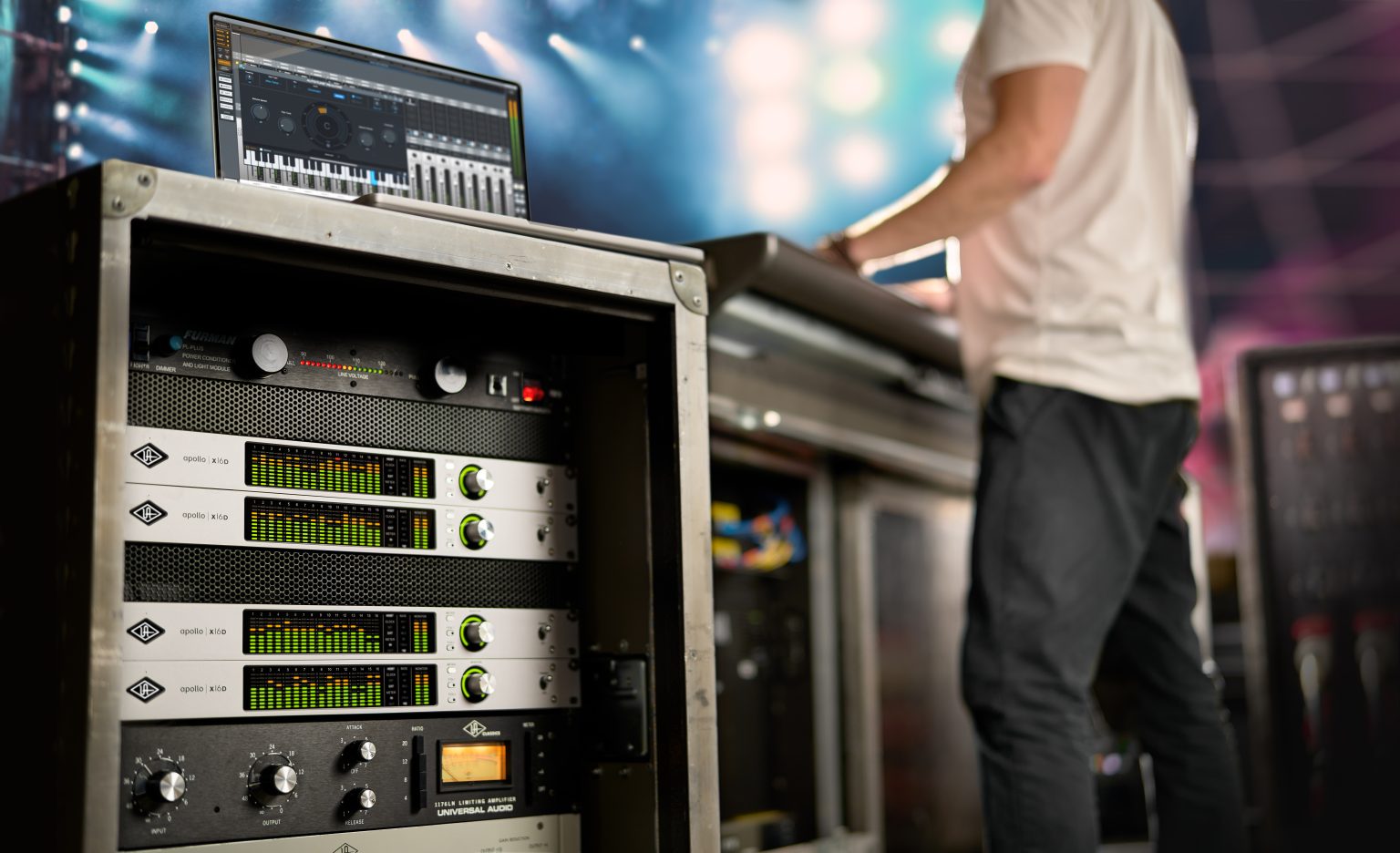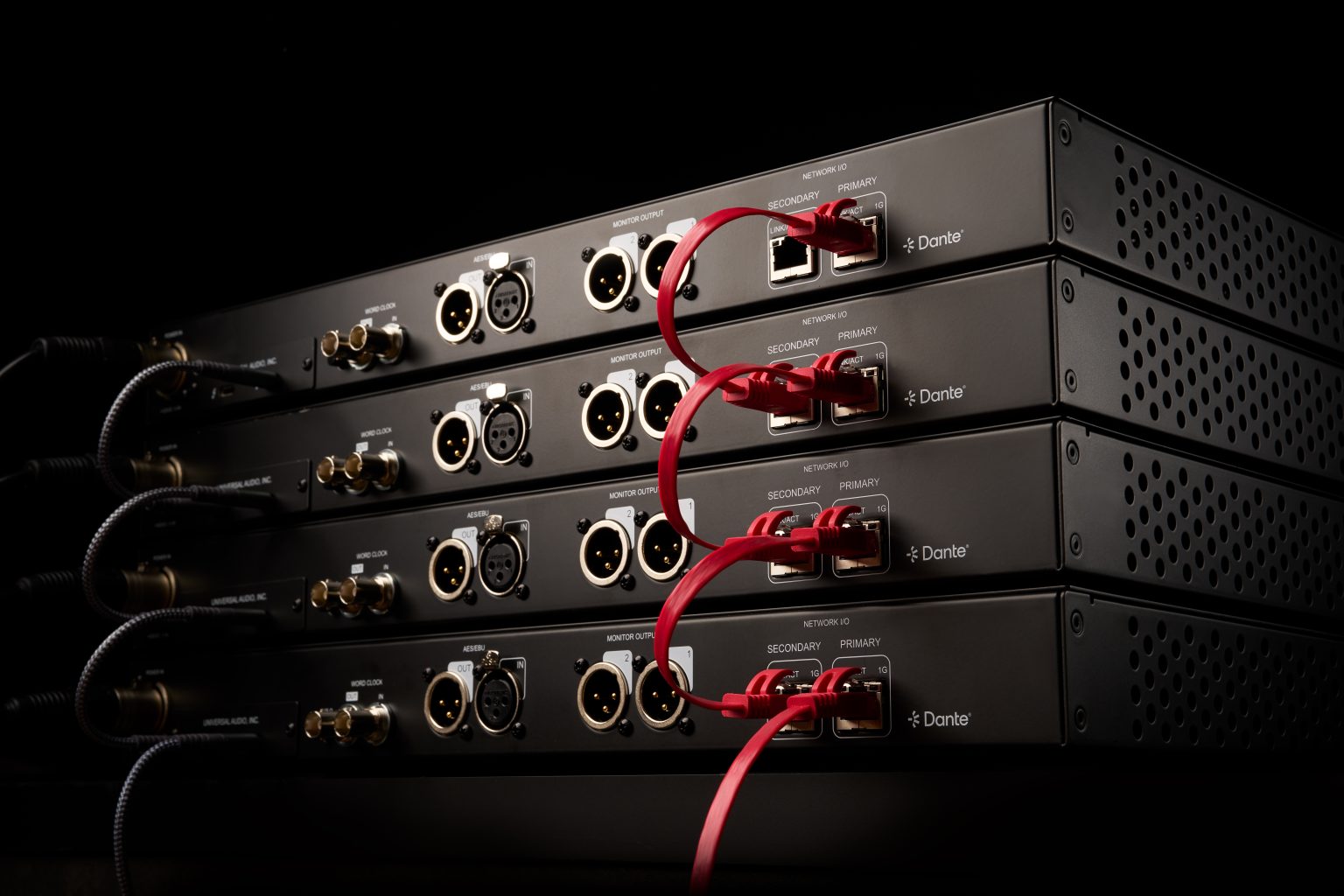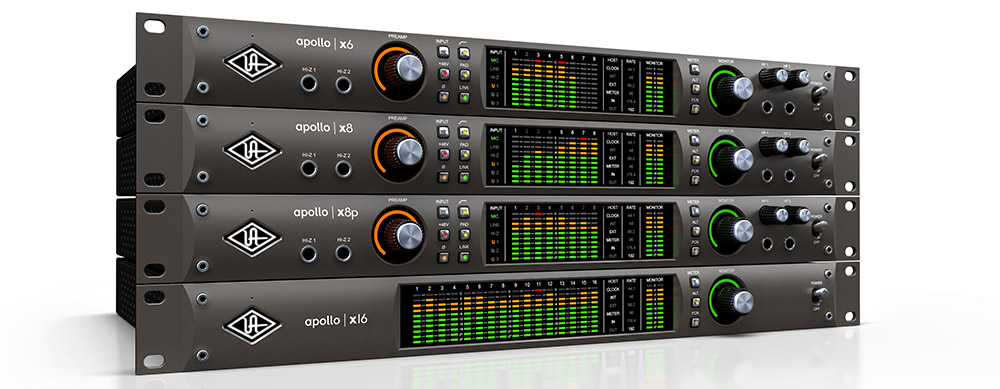Dante Meets the World of UAD
By: Noisegate.com On: 19 July 2024

Universal Audio have announced the Apollo x16D, which features full Dante integration. This is the next leap for production professionals, touring artists, and modern studios with a need for user-friendly interoperability or existing UAD hardware.
Article via Noisegate.com.au.
Universal Audio has a long-standing reputation for creating top-tier audio equipment, and their Apollo family of interfaces has been a staple in both professional and home studios for years. The Apollo x16D, is the newest addition and adds itself to the ever-growing list of brands integrating and expanding their products with network audio technology.

This is sure to pique the interest of members of both the live sound and networked recording studio communities. With its groundbreaking integration of Dante technology, this rackmount 18 x 20 Thunderbolt audio interface promises to deliver elite-class audio conversion and HEXA core processing for both Mac and Windows users. But what exactly is Dante, and how does the Apollo x16D take full advantage of this technology?
Dante, short for Digital Audio Network Through Ethernet, is a technology developed by Audinate that allows for high-quality, low-latency digital audio to be transmitted over standard IP networks. This means that audio signals can be sent between devices using standard Ethernet cables and networks, making it incredibly flexible and scalable for both live and studio environments. Dante has quickly become the industry standard for professional audio networking, offering reliability and ease of use.
Top Features of the Apollo x16D Essentials+ Edition:
- Elite-Class Audio Conversion and Processing: 24-bit/192 kHz audio conversion and HEXA core DSP processing for pristine audio quality and real-time UAD plug-in performance.
- Seamless Dante Integration: 16 channels of Dante I/O for mixing and recording live performances over Ethernet with the ability to link up to four x16Ds for a 64-channel system.
- Instant Plug-In Recall: Quick recall of plug-in settings via MIDI control, ensuring consistent sound quality without performance interruptions.
- Comprehensive UAD Plug-In Suite: Includes a generous suite of UAD plug-ins, from classics like the Teletronix LA-2A to modern favourites such as Auto-Tune.
- Immersive Audio Capabilities: Serves as an all-in-one monitoring hub for immersive audio formats up to 9.1.6, perfect for creating Dolby Atmos, Auro-3D, and Sony 360 Reality Audio mixes.
So why use Dante?
Live Sound
In live sound environments, Dante offers flexibility and reliability. Take say a large concert venue where multiple audio signals need to be transmitted across long distances without degradation. With Dante, sound engineers can route audio from the stage to the mixing console and back with ease, using standard Ethernet cables. This reduces the need for bulky and expensive analog cabling and minimises signal loss.
A large venue with multiple stages could use Dante to manage audio signals with ease. The Apollo x16D can be placed on stage to capture live audio with their elite-class conversion, then transmit the signals over Ethernet to the front-of-house console. This setup ensures high-quality sound with minimal latency, and the ability to instantly recall popular UAD plug-in settings means engineers can adapt to changing performance conditions on the fly.

Recording Studios
In recording studios, Dante allows for the creation of scalable, low-latency networks that connect multiple rooms and devices. This is particularly useful for multi-room studio complexes where different recording sessions might be happening simultaneously. Dante’s ability to transmit high-resolution audio over long distances without loss means that studios can expand their capabilities without compromising on sound quality. You could also use it if you have a high-channel count and want to de-clutter your home-studio.
Placing an Apollo x16D in the tracking room can send audio signals to the mixing room’s interface (another X16D for example) over Ethernet, allowing engineers to work on different aspects of a project simultaneously. The near-zero latency of Dante ensures that the workflow remains smooth and efficient, and the Apollo’s real-time UAD processing capabilities allow for immediate, high-quality adjustments to be made during recording sessions.

How the Apollo x16D Integrates with the Apollo Family
- Scalability: Dante’s network-based architecture allows for easy expansion. Users can link multiple Apollo interfaces, including the Apollo x16D, to create extensive audio networks, whether it’s adding more channels in a live setup or connecting multiple studio rooms.
- Low Latency: Dante’s low-latency performance ensures that audio signals are transmitted quickly and accurately, which is crucial for both live sound and recording applications.
- Ease of Use: With Dante, setting up and managing audio networks becomes simpler. The ability to use standard Ethernet cables and existing network infrastructure reduces complexity and setup time.
- Real-Time Processing: The Apollo interfaces’ HEXA core DSP processing power enables real-time UAD plug-in usage, making it possible to apply high-quality effects and adjustments without delay, which is invaluable in both live and studio scenarios.

In a recording studio already equipped with an Apollo x8p and an Apollo Twin, integrating the Apollo x16D allows for expanded I/O capabilities and additional DSP power. This setup can handle complex recording sessions across multiple rooms, with the Apollo x16D managing the primary tracking tasks while the other Apollos handle additional inputs and monitoring. Dante’s low-latency networking ensures that all devices communicate seamlessly, providing a cohesive and efficient workflow.
For a live sound engineer using an Apollo x8 and Apollo x4 in a concert setting, adding an Apollo x16D to the mix brings 16 more channels of high-quality I/O and the ability to link all interfaces over Dante. This setup enables the engineer to manage larger performances with more inputs, all while maintaining the exceptional audio quality and real-time plug-in processing that Universal Audio is known for.
The Apollo X16D might be a high-level piece of equipment who’s use-case is situated in the professional sound and recording world; however, it does speak to a growing trend of interfaces that have begun integrating network audio technologies to expand their use cases.
To find out more head to the Universal Audio website.
Article via Noisegate.com.au.





